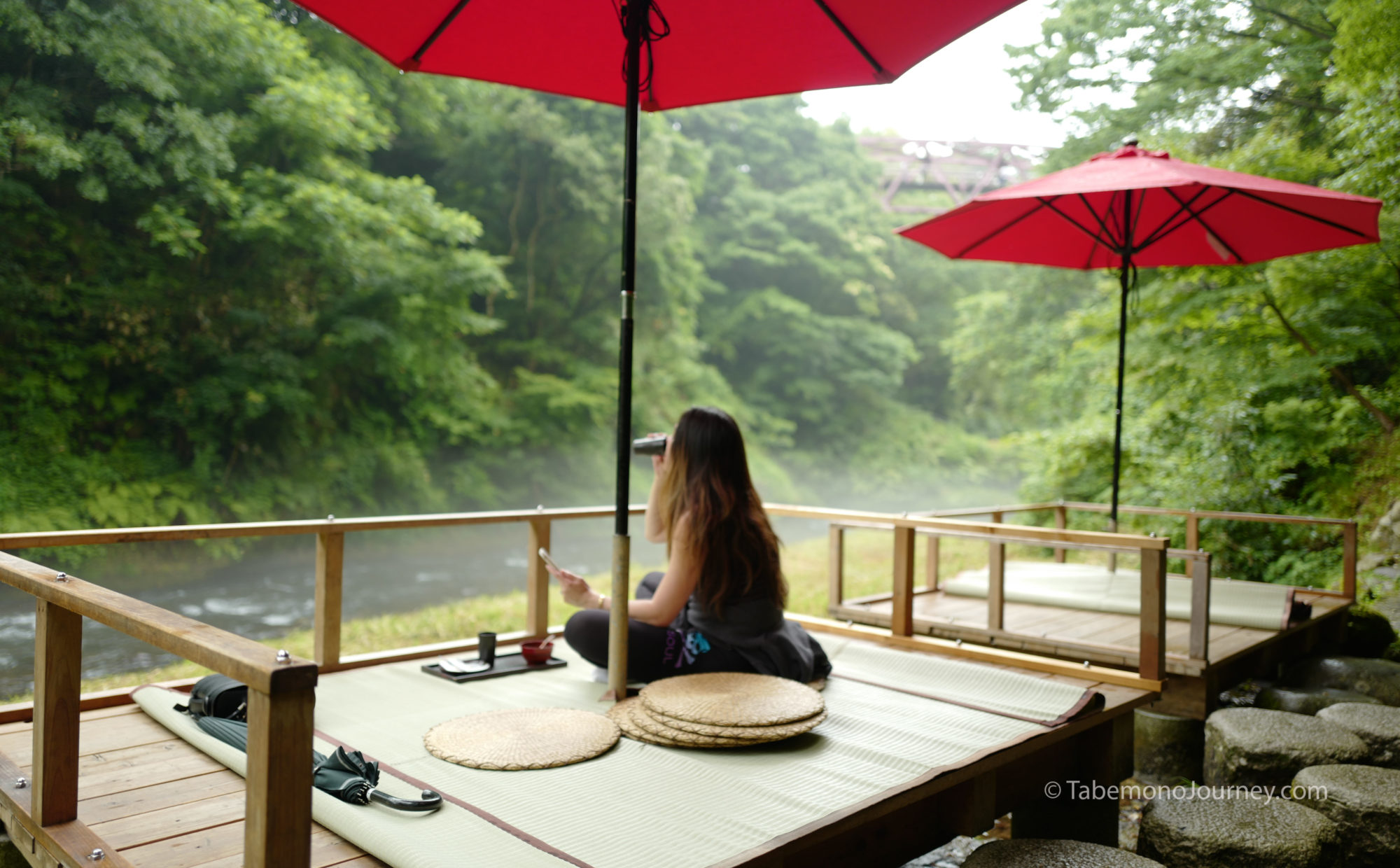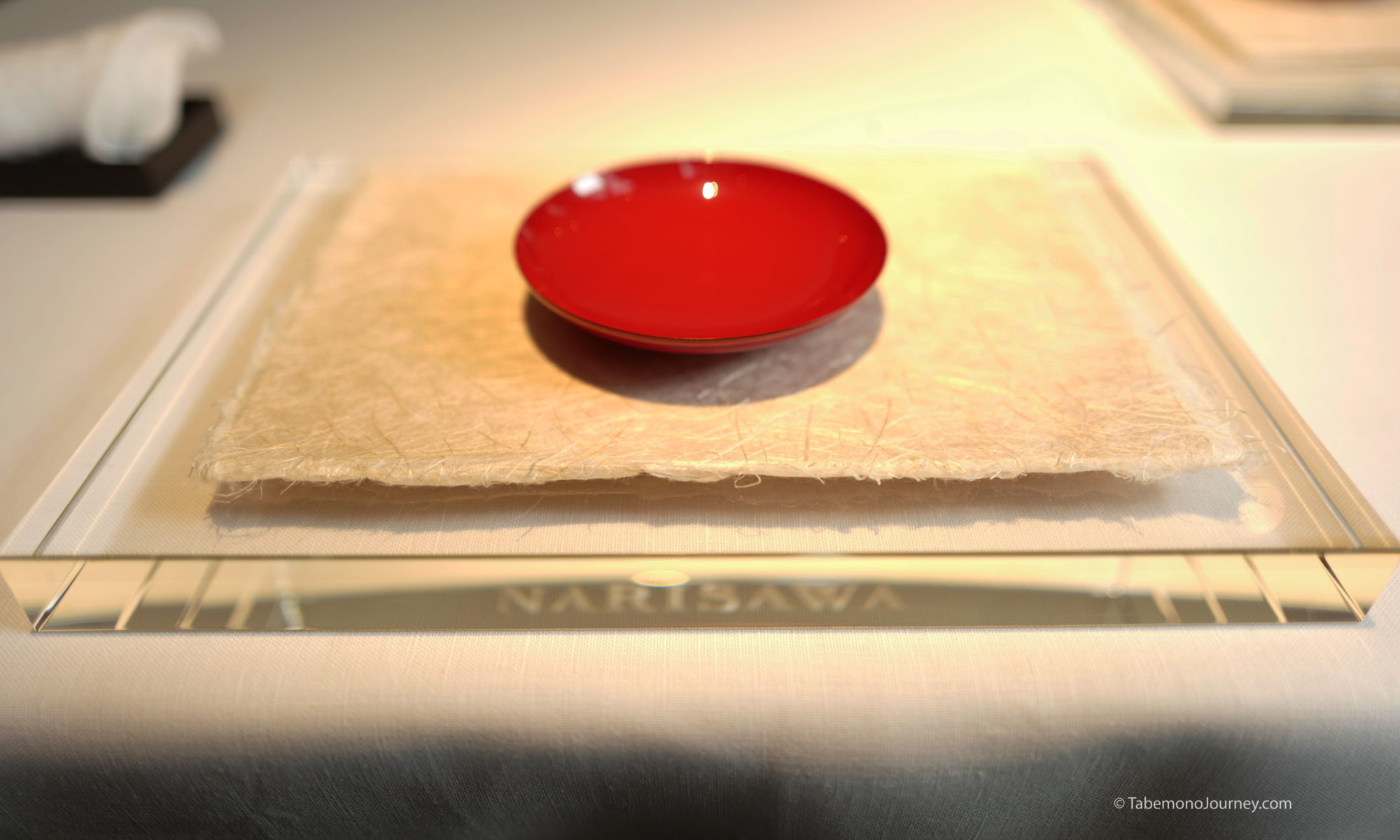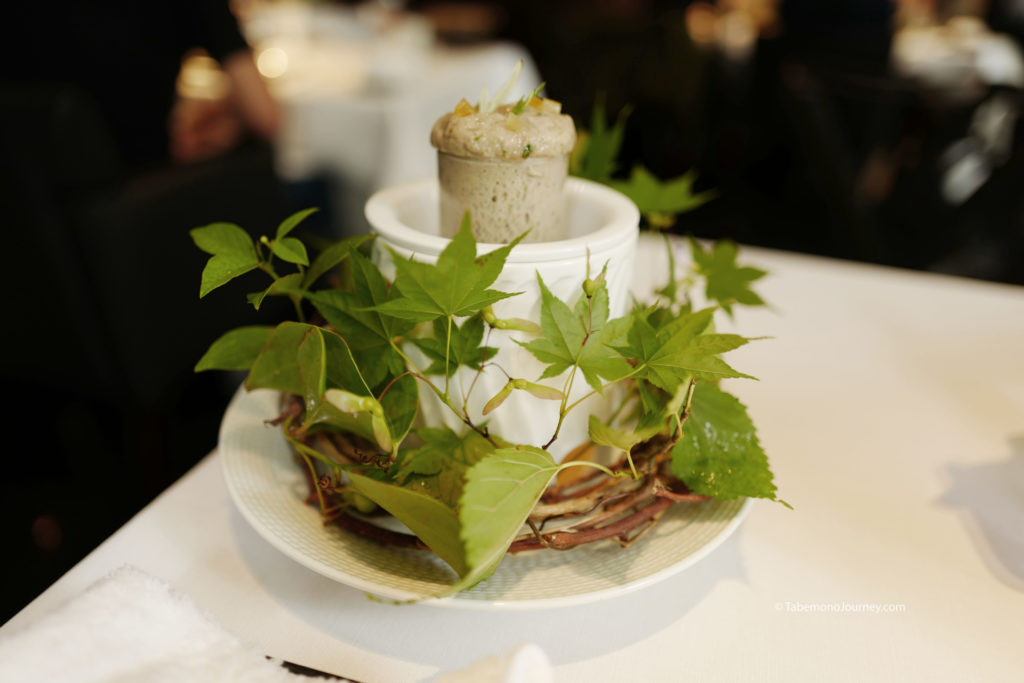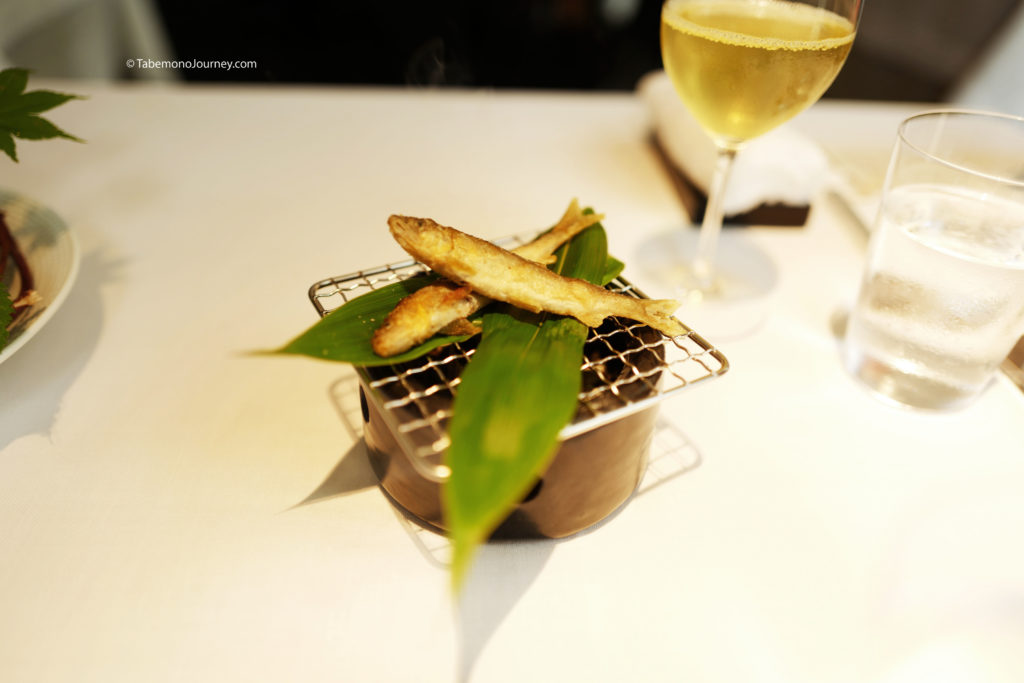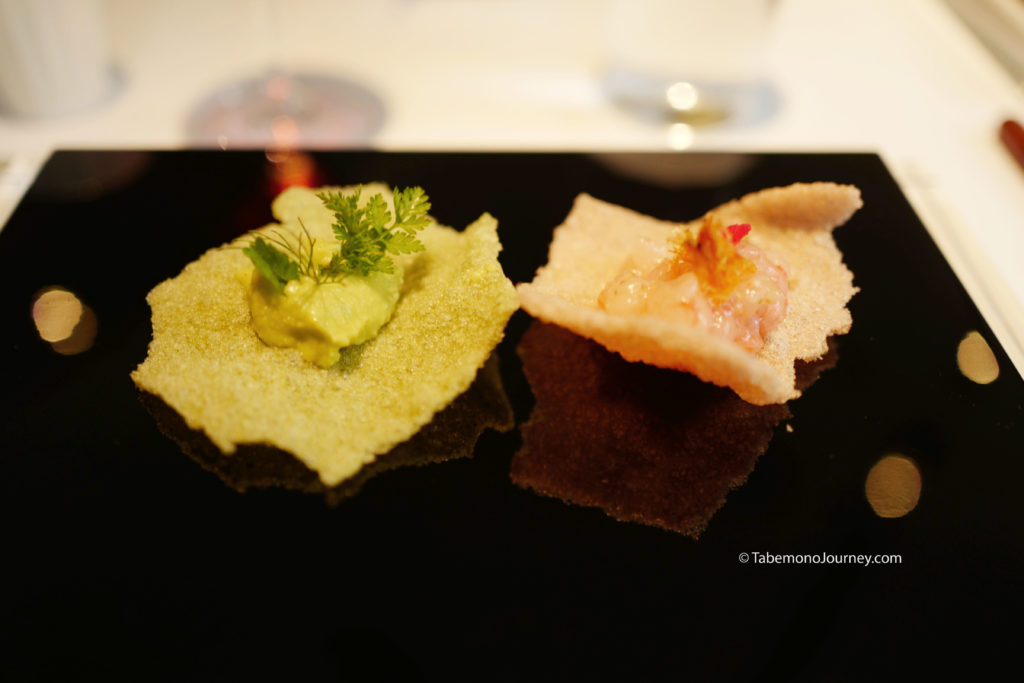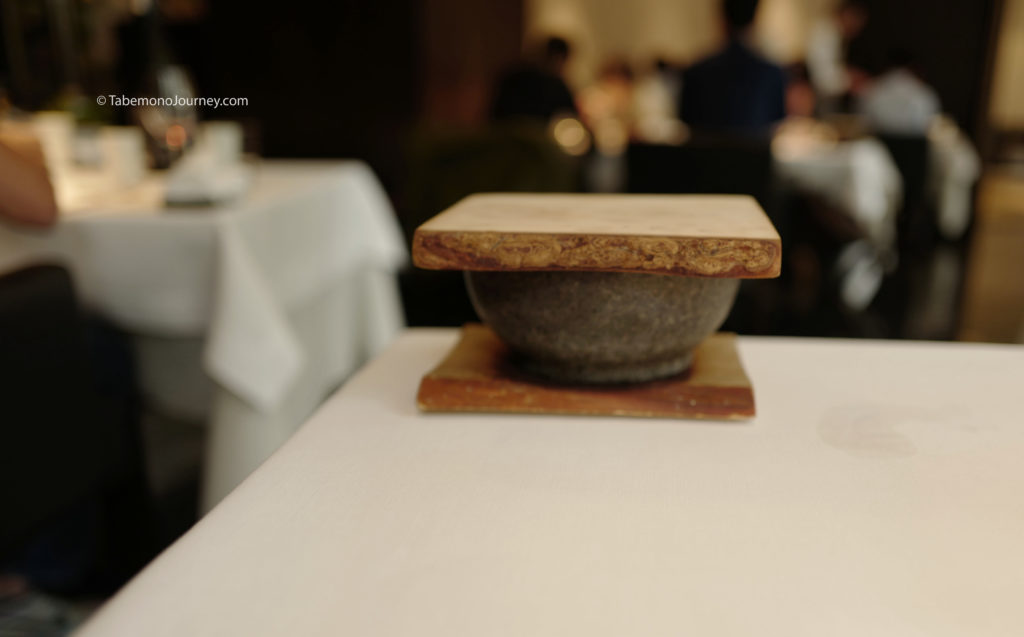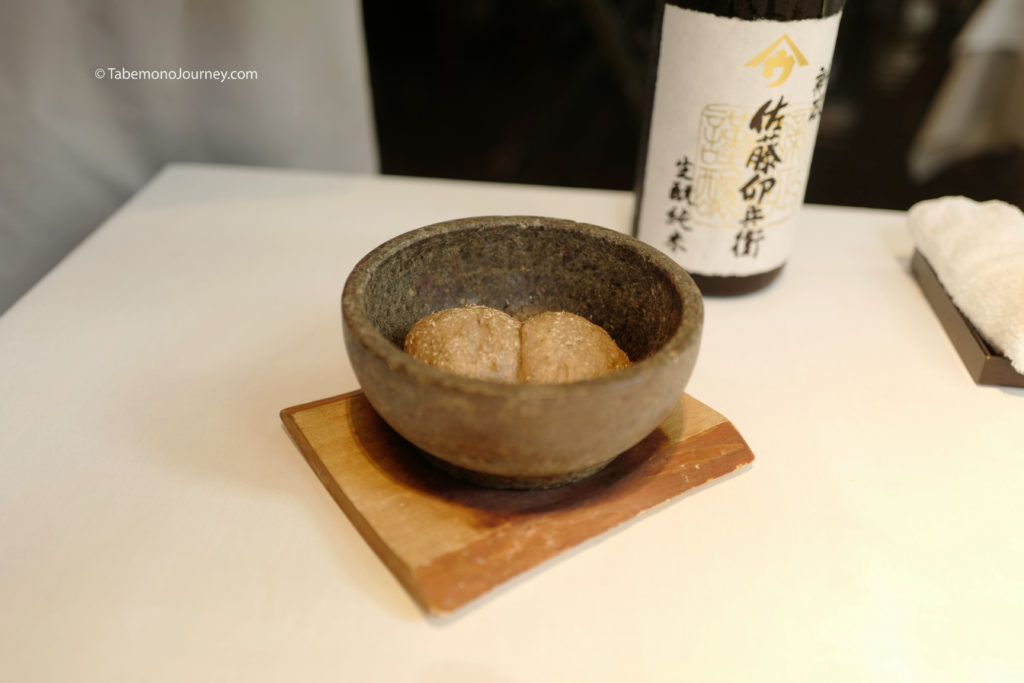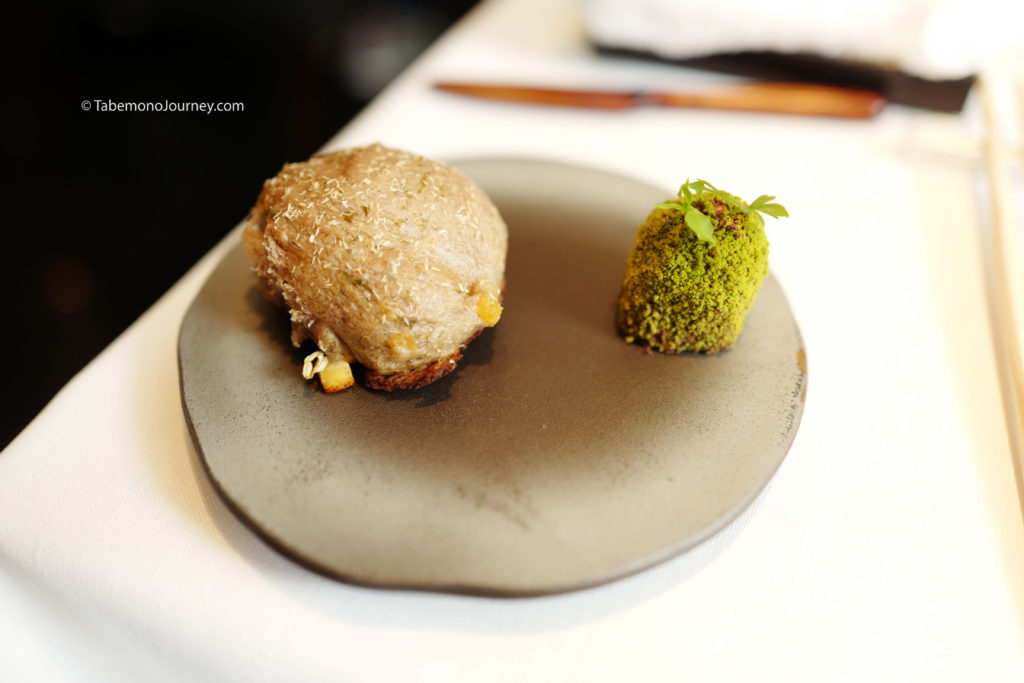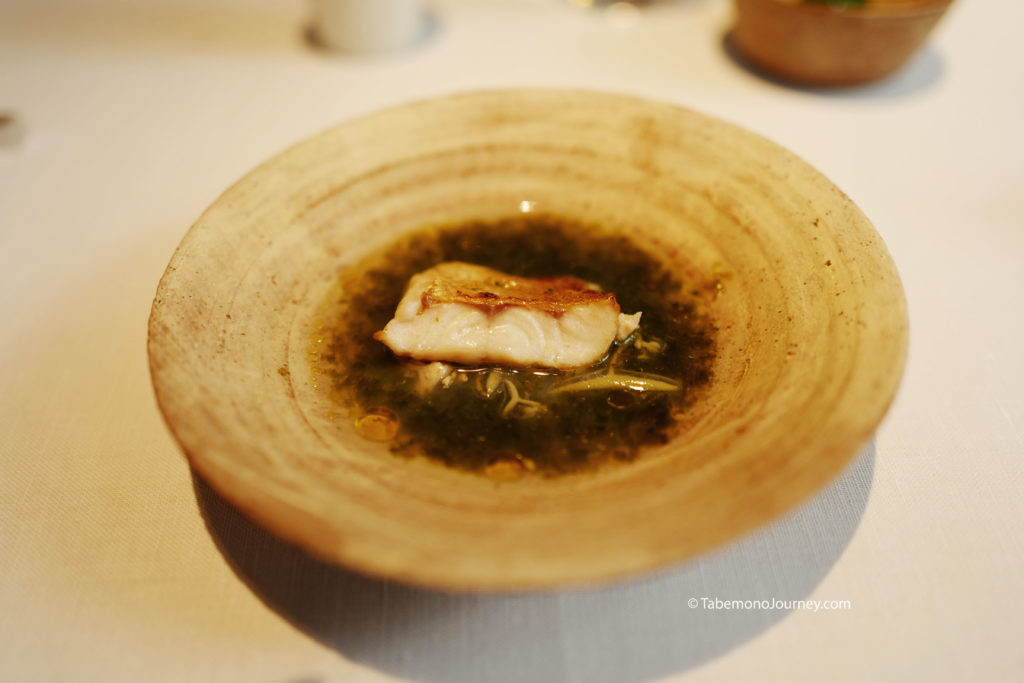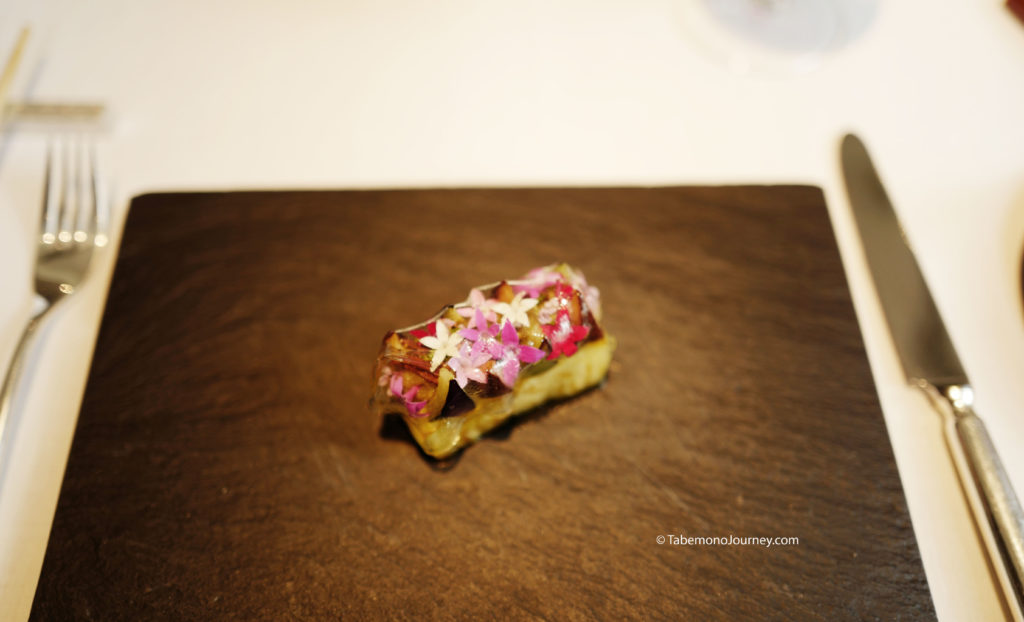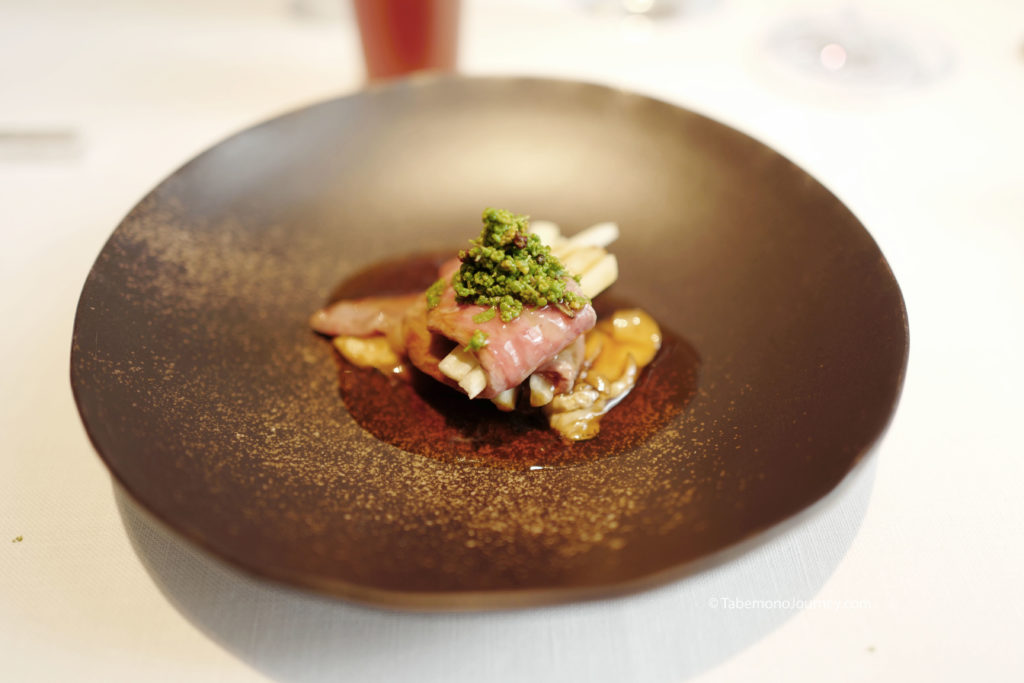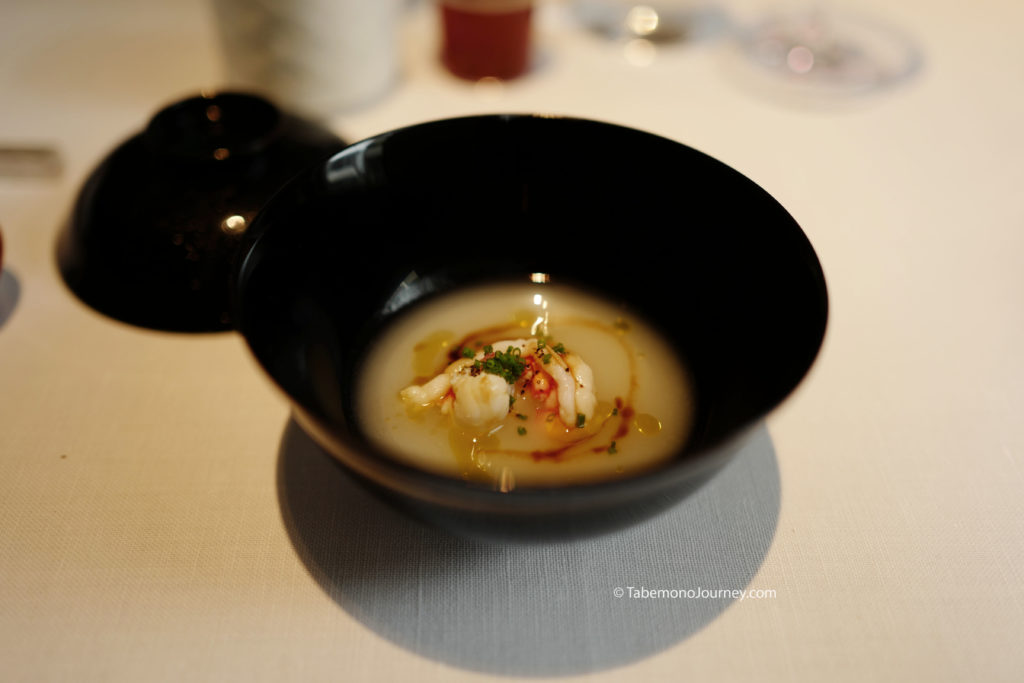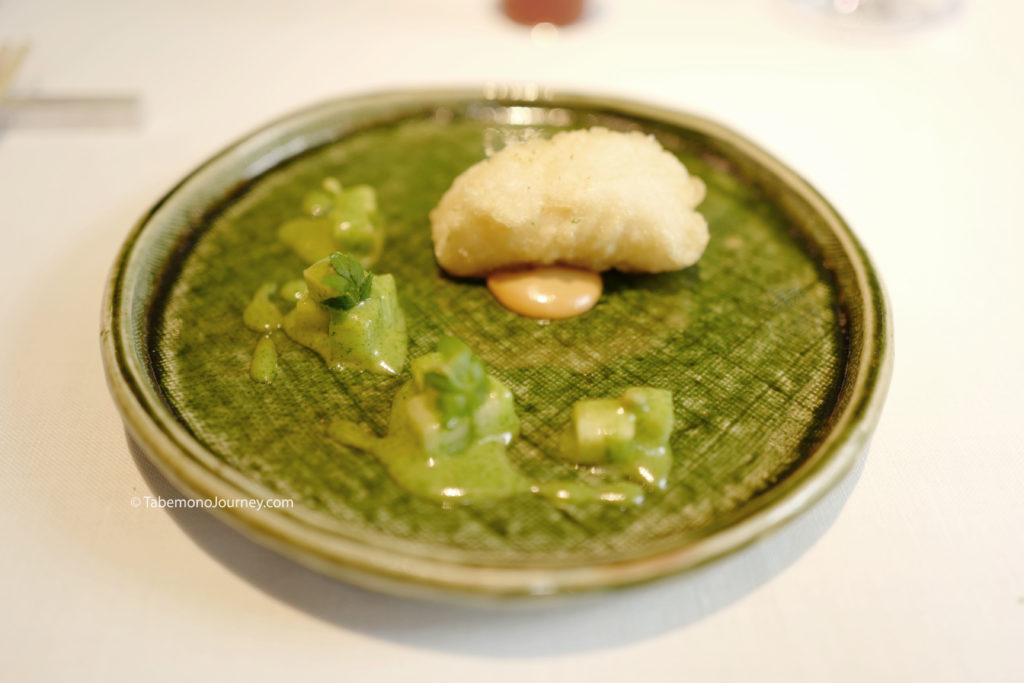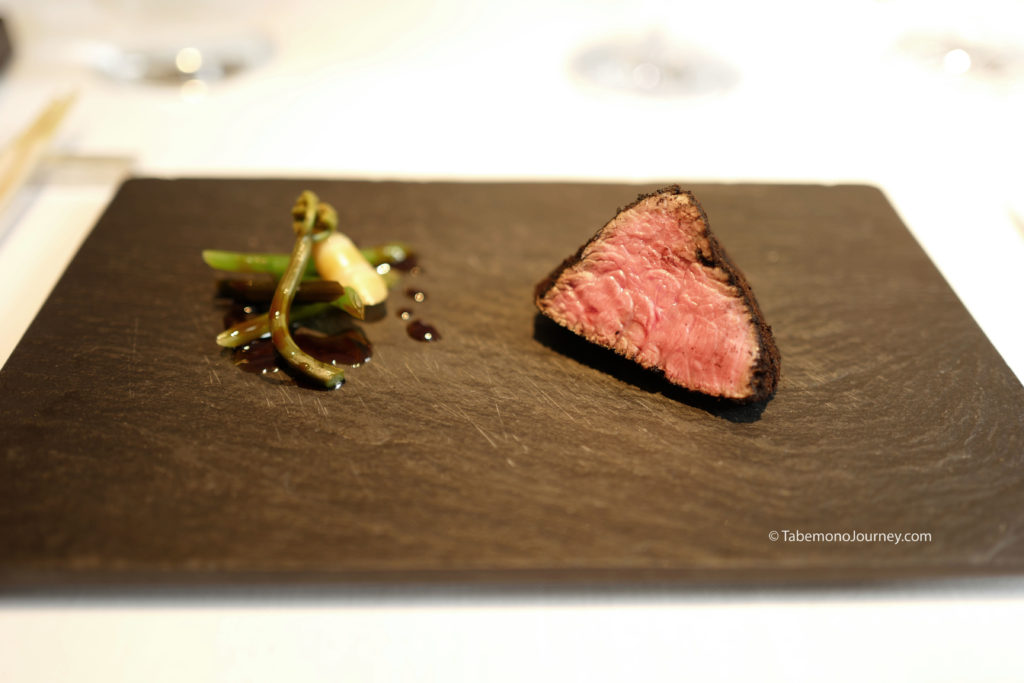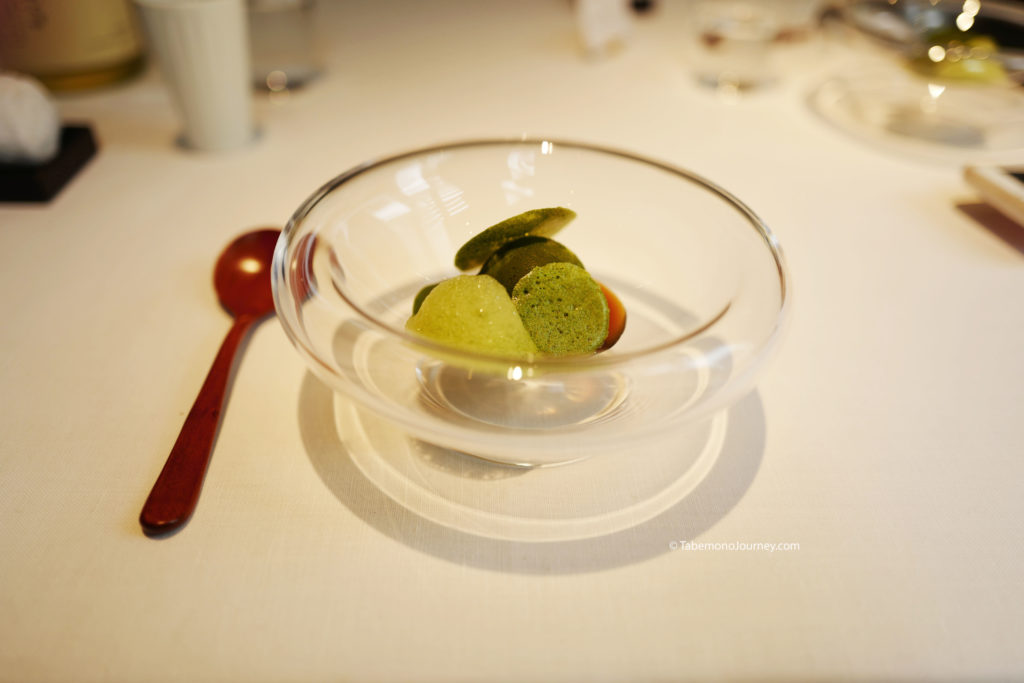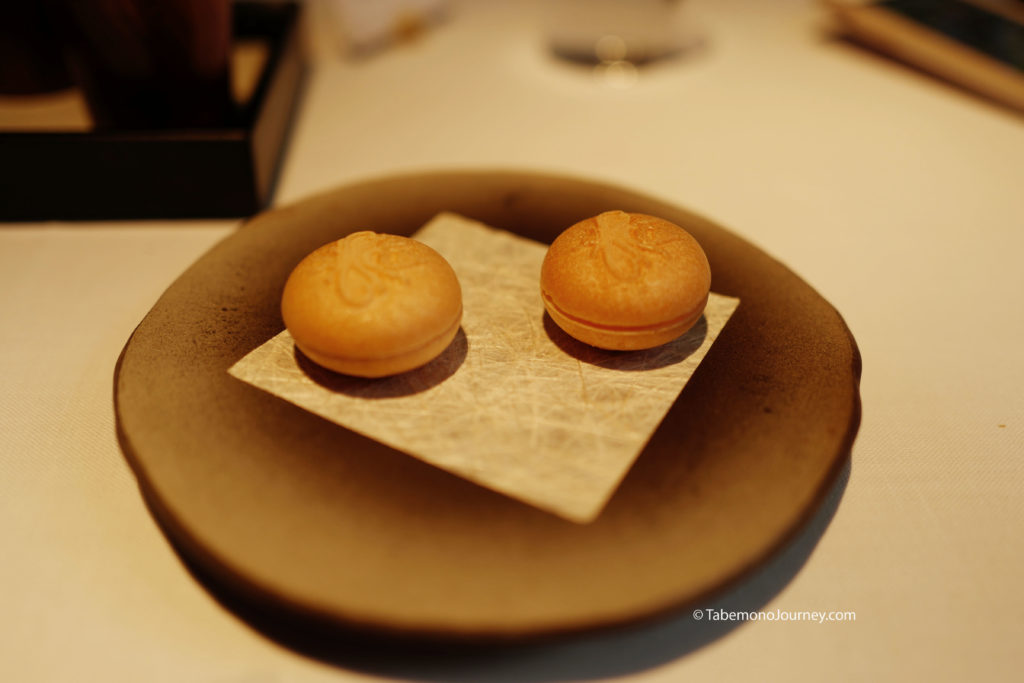I first heard of Narisawa on an episode of NHK’s series “Begin Japanology”. The episode highlighted Chef Yoshirhiro Narisawa’s career and life story in cooking and his unique culinary point of view called “Innovative Satoyama” caught my attention as its focus is about bringing nature to the plate. Chef Narisawa defines a satoyama as a civilization that lives near forests and oceans and lives in harmony with nature. On his menu, he fully explains the significance of Satoyama, which quotes:
“Forests comprise almost 70% of Japan. Its coastline is rated 6th in the world. Japan is surrounded by forests and seas. In this limited space, people cultivate the land and grow rice, they live and walk hand in hand with nature, with the forests and the seas, and they call this type of place the Satoyama.
Responding to the four seasons, the severe changes between them, understanding this environment, and living our lives taking only the most necessary resources for daily life from the earth: this lifestyle is called Satoyama Culture.
The Satoyama is ~Beneficial~ to the body and spirit, and promotes a continuously ~Sustainable~ environment, a culture beyond value, expressed on these plates as “Satoyama Scenery.” ”
This quote epitomizes many of the natural landscapes that you see across Japan when you ride the trains as you can see rice paddies along the terrain right next to cities and mountain scenery.
Chef Narisawa was born into a baker and western sweets maker so was influenced in cooking right from the beginning of his life. He left Japan at 19 years of age and spent 8 years in Europe honing his skills in several top restaurants there, including Joel Robuchon and Paul Bocuse. He returned to Japan in 1996 and opened a restaurant in Odawara, Kanagawa, and eventually opening “Les Creations de Narisawa” in 2003, which he later renamed to the current “Narisawa” in 2011. Narisawa has 2 Michelin stars and is perennially listed in “The Worlds 50 Best Restaurants” since 2009. What caught my attention to his cuisine is that he focuses on promoting unique natural ingredients throughout Japan and is extremely creative such as using dirt as the main ingredient in a soup (which depending on how you look at it was fortunately or unfortunately was not on our menu when we dined).
His restaurant is located in Aoyama, Tokyo with a nice flower garden leading to the restaurant.
You immediately see Narisawa’s creativity as upon being seated, live wheat bread dough sits in front of us and grows from the yeast culture
We are first served “Satoyama Scenery and Essence of the Forest”, which looks like a natural forest scenery. Green tea, spinach powder, soybean yogurt, deep-fried logo, charcoal, and various leaves are arranged artistically on a wooden slate plate to re-create this scene from nature. Water soaked in oak and cedar completes the dish that is in the bamboo cup to give you an essence of the forest.
Baby ayu is served next and it is deep-fried and served on bamboo leaves. You eat the fish whole and it’s fish prized for its sweet meat and slight bitter organs.
Board bean Puree and Amaebi form two small bites that are served on deep-fried crispy crackers. The green one is made from a puree of board bean from Chiba with the crackers made from green herbs from Mie. The orange one is amaebi (sweet shrimp) from Ishikawa with the cracker made from sakura shrimp from Shizuoka.
The bread dough is transferred to a hot stone cooker that sits right on our table and is cooked for twelve minutes right in front of us.
The finished bread is paired with Hokkaido butter that is covered with black olive powder and green tea/spinach powder to look moss-like.
Oyster from Hiroshima is topped with green peas from Mie. Called Green Caviar, the peas were sweet and juicy and was actually the main highlight of the dish over the oyster, as each pea exploded with flavors in your mouth.
Rosy Sea Bass from Ishikawa is paired with a clam juice, seaweed, and junsai broth. Known in Japan as Nodoguru, it’s one of my favorite fish due to its fattiness. The broth is perfect with the fattiness of the fish as it is packed with umami.
“Gion Festival” is a beautiful feast of the eyes. It is named after the summer festival in Kyoto and the fireworks that are showcased. Eggplant from Kyoto is topped with tiny edible flowers and blanketed over a clear jelly.
Wagyu from Saga is wrapped around mushrooms and served with a sauce of seaweed essence. The beef is lightly seared and almost melts in your mouth.
Langoustine Shrimp from Shizuoka is served with broth made from Onions from Hyogo. The langoustine served as the sidekick, as the onion broth stole the show with its sweetness and thick texture.
Deep fried conger pike eel from Aichi is paired with white asparagus and udo sauce. The sauce made the dish. Udo is a plant native to Asia, and has a strong flavor, almost like horse-radish.
The last main dish is one of Chef Narisawa’s signature dishes, called “Sumi 2008” It’s a dish that Narisawa did in collaboration with a Japanese University and the focus was to slow cook Kobe beef at 60 degree Celsius. Olive oil at 55 degree Celsius is first repeatedly poured over the rump of the Kobe beef and then coated in the powder of charcoal-grilled leek to age for several days. It looks almost like a lump of coal prior to cutting. Since the rump is a tougher cut than most parts of the Kobe cow, this is an excellent preparation of this part of the meat. It was full of flavor and had a nice burnt sweetness from the black leek powder.
From the website, you can order a slice of cake to celebrate the occasion and it was a nice way to surprise my wife on her birthday.
The first dessert was focused on green plum from Kanagawa.
The second dessert on the menu focused on Yama Cha from Fukuoka. Yama cha is a wild tea-plant found in the mountains. It’s used to make the ice cream, cookie, and foam.
Monoka with pineapple from Okinawa wraps up dessert.
I have heard mixed reviews of Narisawa, but we came away impressed. Service was exceptional and very attentive to our needs. Chef Narisawa even came by to meet everyone once lunch was complete. From all the dishes, you can sense the amount of kitchen staff it took to prepare each and every dish with the finest of details. Another part I liked about Narisawa is that you can book reservations directly from his website instead of using a concierge from your hotel.
Restaurant information:
Minami Aoyama 2-6-15, Minato-ku, Tokyo
Tuesday – Saturday
8:00~23:00
+81-3-5785-0799
website:
https://www.narisawa-yoshihiro-en.com
